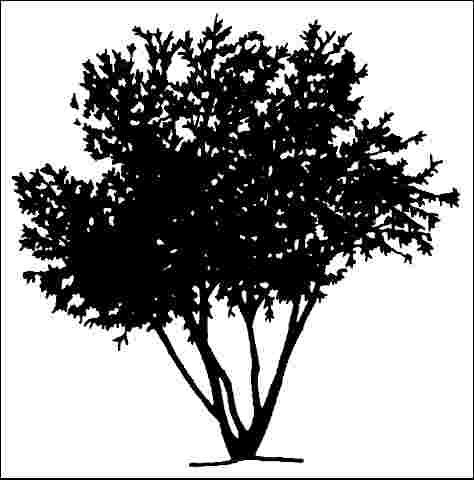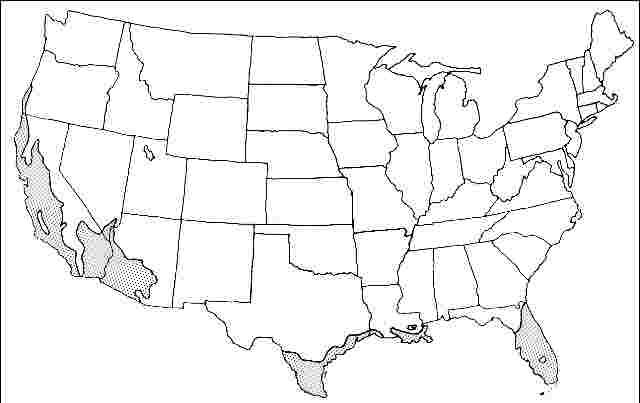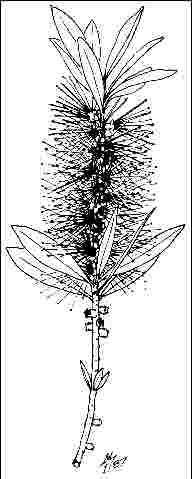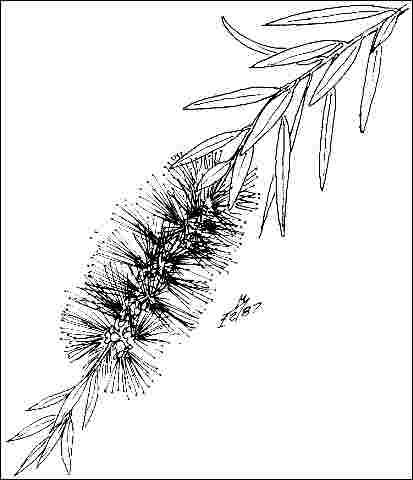Introduction
The common name "bottlebrush", perfectly describes this evergreen plant's bright red flower spikes. Hummingbirds love the flowers, and the plant is hardier than most bottlebrushes. The flowers are followed by small, woody capsules that look like bead bracelets on the bark, and which last for years. Offered as a shrub, bottlebrush can be trained as a tree to 15-feet or espaliered as a quick wall cover. It makes a nice screen or tall unclipped hedge. Pruning to develop several trunks and removing some lower branches can create a fine small specimen tree.

General Information
Scientific name: Callistemon citrinus
Pronunciation: kal-liss-STEE-mawn sih-TRY-nus
Common name(s): Red bottlebrush, lemon bottlebrush
Family: Myrtaceae
USDA hardiness zones: 9A through 11 (Fig. 2)
Origin: not native to North America
Invasive potential: has been evaluated using the UF/IFAS Assessment of the Status of Non-Native Plants in Florida's Natural Areas (Fox et al. 2005). This species is not documented in any undisturbed natural areas in Florida. Thus, it is not considered a problem species and may be used in Florida.
Uses: hedge; parking lot island < 100 sq. ft.; parking lot island 100-200 sq. ft.; parking lot island > 200 sq. ft.; tree lawn 3–4 feet wide; tree lawn 4–6 feet wide; tree lawn > 6 ft. wide; street without sidewalk; espalier; screen; specimen; container or planter; deck or patio; highway median
Availability: somewhat available, may have to go out of the region to find the tree

Description
Height: 10- to 15-feet
Spread: 10- to 15-feet
Crown uniformity: symmetrical
Crown shape: upright/erect, round
Crown density: moderate
Growth rate: moderate
Texture: fine
Foliage
Leaf arrangement: alternate (Fig. 3)
Leaf type: simple
Leaf margin: entire
Leaf shape: lanceolate, linear
Leaf venation: pinnate
Leaf type and persistence: evergreen
Leaf blade length: less than 2-inches, 2- to 4-inches
Leaf color: green
Fall color: no color change
Fall characteristic: not showy


Flower
Flower color: red
Flower characteristics: very showy
Fruit
Fruit shape: round
Fruit length: less than .5-inch
Fruit covering: dry or hard
Fruit color: brown
Fruit characteristics: does not attract wildlife; showy; fruit/leaves not a litter problem
Trunk and Branches
Trunk/bark/branches: branches droop; not showy; typically multi-trunked; thorns
Pruning requirement: little required
Breakage: resistant
Current year twig color: gray
Current year twig thickness: medium
Wood specific gravity: unknown
Culture
Light requirement: full sun
Soil tolerances: clay; sand; loam; acidic; well-drained
Drought tolerance: high
Aerosol salt tolerance: moderate
Other
Roots: not a problem
Winter interest: no
Outstanding tree: no
Ozone sensitivity: unknown
Verticillium wilt susceptibility: resistant
Pest resistance: resistant to pests/diseases
Use and Management
A good choice for a spot offering full sun, it will adapt to a variety of soils. Very drought-tolerant once established, bottlebrush tolerates any soil except very poor, alkaline, or poorly drained. Fertilize regularly to maintain good flower color and dark green foliage. Suckers from the trunk need to be removed periodically to maintain tree form.
Propagation is usually from cuttings, as it is variable when grown from seed.
Pests
No particular insect pests are listed for Callistemon.
Diseases
If the soil is too moist, root and crown-attacking fungus diseases can be a problem. Prevention is your best hope—keep the plant on the dry side with low fertility and good air circulation.
A twig gall, formed in response to a fungus (Sphaeropsis tumefacens), can disfigure the tree.
Chlorosis, a systemic condition that causes new leaves to turn yellow, can be corrected with treatment of the soil using iron sulfate or iron chelate.
Literature Cited
University of Florida, Institute of Food and Agricultural Sciences. 2018. "Assessment of Non-native Plants in Florida's Natural Areas" (https://assessment.ifas.ufl.edu, 4/29/2019) Gainesville, FL, 32611-4000, USA.